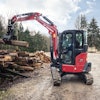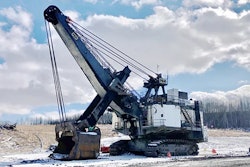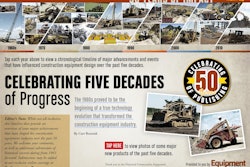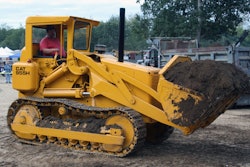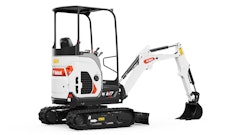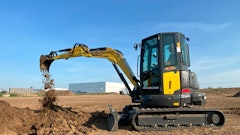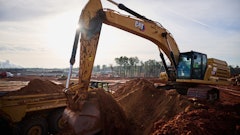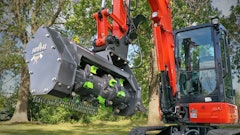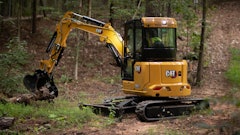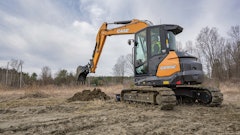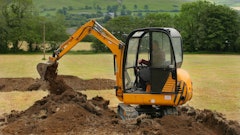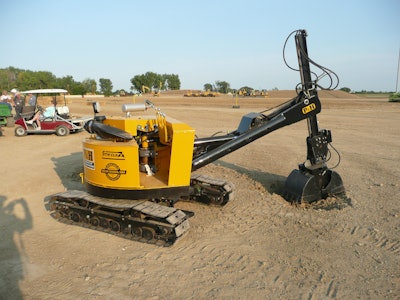
By Thomas Berry
As with so many other types of modern machines, the compact hydraulic excavators that are widely used today are not a new concept. While the physics of cable-operated excavators made the design of a compact version impossible, the idea of putting the functions of a large hydraulic excavator into a small one for the sake of portability and usefulness for smaller tasks dates to the mid-1960s, if not earlier.
One of the earliest American compact excavators is the P&H Stik-Clam. Hydraulic excavators were developed earlier in Europe than they were in the U.S., so there is a possibility that a compact European excavator may predate the Stik-Clam.
On the market in May 1965, the model S-20 Stik-Clam was, as the name suggests, a hydraulic clamshell. It weighed only 4,200 lbs. and was powered by a Wisconsin gas engine rated at 24 hp. The bucket was 17 in. wide with a capacity of 2 cu. ft., and it was mounted to a universal joint at the end of an extendable dipper stick. The universal joint allowed the bucket to rotate up to 90° left or right in 15° increments, and it allowed the Stik-Clam to dig flush along walls and other obstructions. It could dig to 11 ft. deep and a maximum radius of 14 ft. 9 in. With the boom fully raised and the stick fully extended, it could also excavate 11 ft. above ground, and the bucket could be pivoted to work above or below the tip of the boom.
P&H’s sales literature described the Stik-Clam’s innovative design as follows: “This unique tool speeds hundreds of tasks never before assigned to mechanical power . . . literally invents profit-making applications for its users. By any yardstick, there’s absolutely nothing like it.”
As radical and pioneering as it was, the Stik-Clam was evidently not a success. It would be another 30 years until compact excavators would gain wide acceptance in the U.S. marketplace.
The Historical Construction Equipment Association (HCEA) is a 501(c)3 non-profit organization dedicated to preserving the history of the construction, dredging and surface mining equipment industries. With over 4,000 members in 25 countries, activities include publication of a quarterly educational magazine, Equipment Echoes; operation of National Construction Equipment Museum and archives in Bowling Green, OH; and hosting an annual working exhibition of restored construction equipment. Individual memberships are $35.00 within the USA and Canada, and $45.00 US elsewhere. HCEA seeks to develop relationships in the equipment manufacturing industry, and offers a college scholarship for engineering and construction management students. Information is available at www.hcea.net, by calling 419-352-5616 or e-mailing [email protected].
The 2015 show is Labor Day weekend in Janesville, WI. To learn more, visit http://bit.ly/1KyZUrE.


